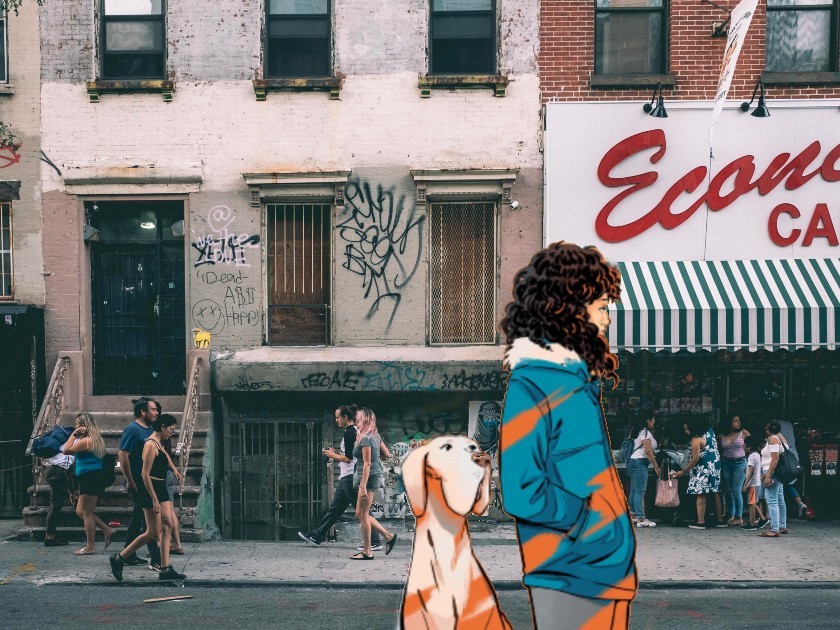
Cover of Whistle by E. Lockhart, illustrated by Manuel Preitano, cropped. Design by Simona Zaretsky.
When I was a girl, my dad’s brother Richie used to take my cousins and me to this used-and-new comic book shop in Seattle. We were given a few bucks to spend; used comics were mostly ten cents each. I bought Archie and Richie Rich, and when I’d finished my own stash — and my cousin Sarah’s — I would move on to Richie’s superhero comics. He read Batman, Superman, The Fantastic Four, Spider-man, and Hulk.
Forty-some years later, I find myself the inventor of DC Comics’ first Jewish superhero (originating as Jewish) since 1977’s Seraph. Writing Whistle: A New Gotham City Hero (illustrated by Manuel Preitano) gave me a chance to really think about what all those comic book stories meant to me when I was young, and why I wanted to create a Jewish hero in particular.
I was raised on the works of number of great Jewish children’s book creators: Judith Viorst, Judy Blume, Ezra Jack Keats, Norma Klein, Maurice Sendak, Charlotte Zolotow. However, most important was Sydney Taylor. Her All-of-a-Kind Family stories, set on the Lower East Side in the early twentieth century, were in many ways my introduction to Jewish traditions. My dad and paternal grandparents loosely participated in these rituals and had a fierce pride in their heritage and culture. I read Taylor’s books over and over; later in life, I was lucky enough to be granted the right to use her characters in a picture book, All-of-a-Kind-Family Hanukkah (illustrated by Paul O. Zelinsky, published under my legal name, Emily Jenkins).
Initially I didn’t understand that the superhero comics I was reading were part of that tradition of Jewish literature. But of course they were. The history of Jewish creators in comics is long and rich, but let’s focus on two icons: Superman and Batman. Jerry Siegel and Joe Schuster created Superman in 1938. Those two Jewish creators imagined a refugee (alien) child who assumes a name (Clark Kent) that allows him to hide his secret identity. Meanwhile he wields superpowers that allow him to fight the Nazis (as he did in early comics).
Bill Finger and Bob Kane, also Jewish creators, invented Batman in 1939. Here is a hero whose unique life mission comes from the trauma of seeing his parents murdered, often read as an analog to Jewish experiences in Nazi Germany. Batman has no superpowers: his wealth and brains give him the edge over criminals. Scholars and essayists have understood those traits as coded Jewish, along with the concept of secret identities generally.
Initially I didn’t understand that the superhero comics I was reading were part of that tradition of Jewish literature. But of course they were.
I’m simplifying here. A lot. There has been much written about these heroes through Jewish lenses, and the analysis is nuanced. But my point is that I was consuming comic book characters who were in several ways deeply Jewish. The idea of tikkun olam, or world repair, is the central mission of the superhero.
Whistle is about a girl named Willow Zimmerman who lives in Batman’s Gotham City, but in a neighborhood of my own invention. Down River is based on New York City’s Lower East Side, especially the LES of my own childhood in the 1970s. The area described in the Sydney Taylor books I grew up on (densely populated with Jewish people from all over Eastern Europe and the Ottoman Empire) had become a more mixed neighborhood, still solid in its Jewish roots.
In Whistle, the pickle stores, delicatessens, and appetizing shops still stand, along with a number of synagogues; Willow sees her neighborhood deteriorating as supervillains attack its community centers, and real estate developers push people out of their homes. When she develops powers, together with her Great Dane companion Lebowitz, they become Whistle and the Hound. They are heroes who will protect Down River.
Arguably, the two most popular overtly Jewish comics characters are villains. Harley Quinn (played in recent movies by Margot Robbie) is the Joker’s adorably deranged life-partner and co-conspirator. She is based on Jewish comedian Arleen Sorkin, who voiced her in the TV series in which she first appeared. Magneto (played in recent X‑men movies by Ian McKellen and Michael Fassbender) is a Holocaust survivor with the mutant power to generate and control magnetic fields.
That’s not to say there aren’t heroes in whose path Whistle follows. I’m glad to say there are, including but not limited to: Gertrude/Arsenic of Runaways, Thing of The Fantastic Four, and Kitty Pryde of X‑Men. New iterations of Kate Kane/Batwoman, Zatanna, and Green Lantern all identify as Jewish as well.
Still, Whistle is written for the kid I once was, a kid who loved comics but didn’t realize any of those heroes were written to reflect her own experience. It’s written for a kid who felt a kinship with those stories, but didn’t know where that feeling came from. A kid who maybe would have felt stronger and braver if she had been told: Here’s a girl like you. A secular Jewish person, proud of her heritage, living with a single mom on a tight budget, trying to figure out how to make a difference. And you know what? She’s a hero.
E. Lockhart is the author of the #1 New York Times bestseller We Were Liars and a bunch of other novels, including Again Again and Genuine Fraud. She writes books for young readers under the name Emily Jenkins and her picture book All-of-a-Kind Family Hanukkah won the Sydney Taylor Award. Whistle is her first graphic novel.